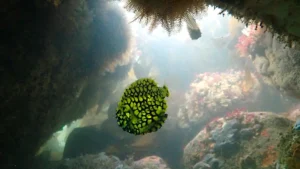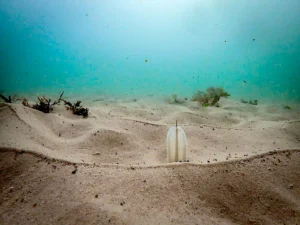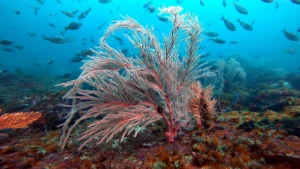South Africa has five species of abalone which is locally referred to as perlemoen. Haliotis midae is the biggest of the South African abalone and most commonly seen. The others are Haliotis parva, Haliotis spadicea, Haliotis queketti and Haliotis speciosa. Abalone are marine gastropod molluscs or in simpler terms a large marine snail. The name perlemoen comes from old Dutch ‘paarlemoer’ meaning ‘mother of pearl’ in reference to the nacre inside of the abalone shell. Other common names around the world for abalone include ear shells, sea ears, muttonshells, ormer, bao yu and pāua. There are believed to be 56 species of abalone in the world with 18 additional subspecies.
In South Africa this simple snail is heavily poached by gangs linked to the illegal drug trade. We have witnessed first-hand how intoxicated poachers arrived in minibuses at our favourite freediving site in a Marine Protected Area, fully clad in scuba gear and darted down to the ocean to begin stripping out whatever abalone they could find. The sheer audacity and vigour in which poachers work collecting abalone does not leave much hope for its survival. Hundreds of shucked abalone shells, blue municipal garbage bags, empty 2l fizzy drink bottles and empty energy gel packets are typically what we find in remote areas that have been stripped of abalone by poachers. At around US$60 per kilogram, poaching abalone is very lucrative. Most poached and illegally harvested abalone meat in South Africa is exported to Asia. Poachers are paid in cash or drugs by the gangs that smuggle the abalone out of the country. Abalone is locally and internationally threatened with extinction due to overfishing as well as the acidification of our oceans which erodes abalone shells. Wild abalone populations have already been decimated to the point where farmed abalone now supplies most of the abalone meat consumed.
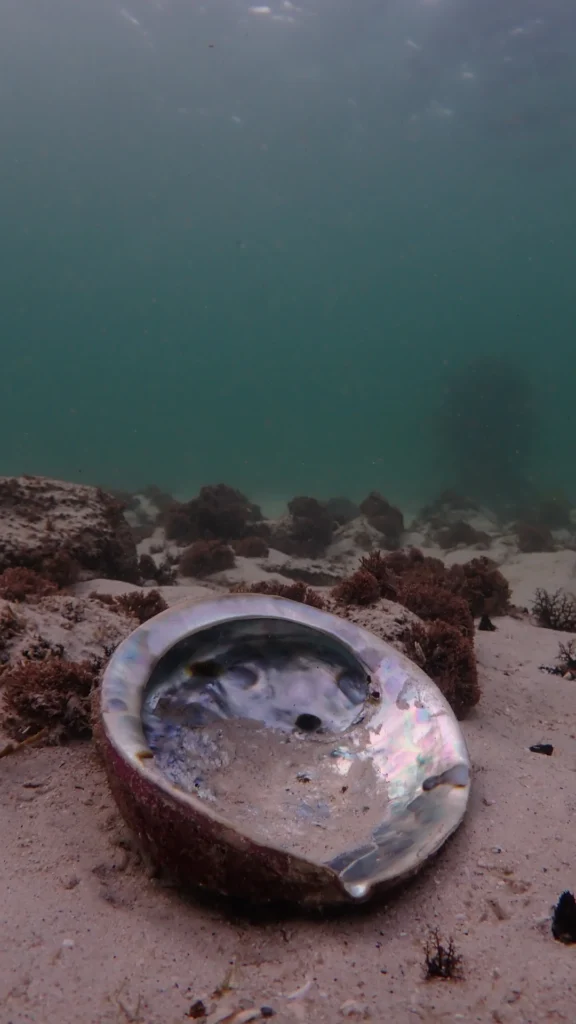
The South African abalone or perlemoen has an corrugated, ear-shaped shell which covers the dorsal part of the body with some fleshy parts protruding from the sides. Invertebrates often grow on the outer shell. There is a neat row of holes, called tremata, along the edge of the shell which are used for breathing.The inner side of the shell is composed of mother-of-pearl and is highly iridescent with a range of colours. This has made abalone shells attractive to humans as decorative objects and has been used for jewelry, buttons, bowls, ashtrays, furniture and musical instruments. Muscle attaches the body of the abalone to the shell. It has a strong muscular foot with a mantle circling it. The epipodium also circles the foot and has tentacles which are the sensory structures of the abalone. Haliotis midae can grow up to 19cm big and can live up to 30 years
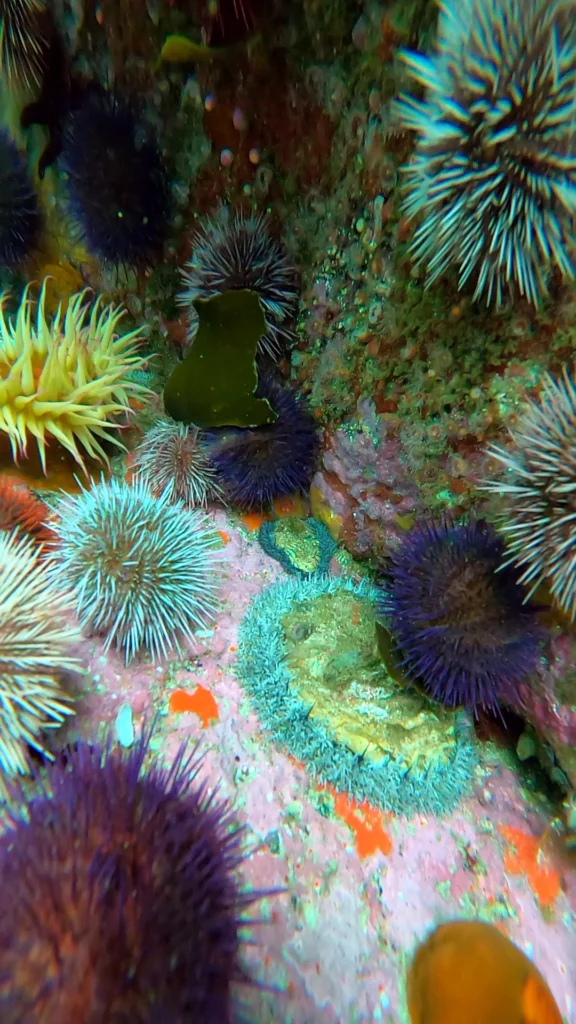
Abalone can be found along two-thirds of South Africa’s coastline between the intertidal zone down to around 20m. They prefer crevices in rocky reefs in kelp beds. They move by creating wave-like movements across the muscular foot and use it to grip onto rocks. Abalone feed mainly on red algae and kelp (Eklonia maxima – sea bamboo). They do this by trapping blades of algae under their foot and then consuming it. Abalone are distinctly male and female. When they are ready to spawn, abalone aggregate in shallow water where they release eggs and sperm simultaneously. Unfortunately due to poaching these aggregations are becoming very rare and the life cycle of abalone is being compromised. Juvenile abalone find areas where they can settle and prefer rocky areas where they can shelter or they patch themselves to sea urchins which provide them with protection until their shells are hard enough to defend against predators. As a result of their dependency on urchins for safety, any decrease in urchin numbers also results in a decrease in abalone. Rock lobster which feed on urchins are thus a major threat to abalone. Direct predators of abalone include octopus and eagle rays. Humans are of course the greatest threat to abalone.
Thankfully we still see perlemoen on our freedives in the kelp forests around Cape Town, but their numbers are sparse. Freediving is one of the best adventure activities in Cape Town for spotting these infamous snails, but please keep the locations a secret!

